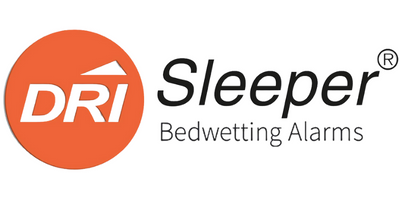My 10 year old regularly has wet beds and we had tried everything possible to help him. I had looked up alarms before but thought it would be a wasted expense but after still no improvement we decided to go for it. I don’t know how this alarm works but it’s been like a miracle. After 2 nights of the alarm going off and my son not waking to it I thought it was going to be a failure but since then he has been completely dry, and has been for well over a month now which is the longest he has ever gone. So my advice would be don’t hesitate and just buy it as for us it has been worth every penny.
This alarm has been fantastic for our heavy sleeping 7 year old. He initially was too worried about it going off, but since using the device he is dry almost every night now.
Who ever invented this alarm is a genius,l bought this as a last resort ,from waking my son through out the night and still having him wet in the morning,we were both getting frustrated and sleep disturbed most days.The alarm has worked its magic we are going to 6 weeks of being dry ,he now wakes up on his own,the good thing his little brother is now using the same alarm too(first week).To anyone hesitant to purchase this ,l swear this is genius ,you just have to know the first 2-3 weeks might be hectic depending on each child but it gets easier.This is the best investment l ever made this year so far.😀
Very happy that after 4-5 weeks our 8 year old is out of night time nappies, he is very proud too!
This was perfect for a wriggly sleeper, we didn't have to worry about cords and we were able to use it in his nappies which was great (no changing sheets in the middle of the night).
We found making sure he went to the toilet 30 mins before bed and just before bed helped too, but the alarm taught him what we couldn't on our own.
We feel the alarm helps to connect bladder and brain where other methods have failed. It is discrete, easy to use and encourages independence.
This product has meet our expectations, currently night training our daughter, and seeing results of being dry at night time.
My 6 year old had never had a dry night. She is a heavy sleeper and would sleep through even when she was wet.
We started with the bedwetting alarm about 5 weeks ago. The first 2 weeks the alarm would go off 2 times per night most nights, and she would not wake up at all. The alarm is pretty loud so I would hear it and wake her up every time. By the third week she was starting to wake up when the alarm would go off, and by the 4th week she had a dry night! She has just done 6 dry nights in a row now, and is even waking up during the night when she needs to go to the toilet.
The bedwetting alarm has been just what we needed! Highly recommend.
We have been using it for a few weeks and there is improvement. We have to get up when alarm goes off, as Mr 9 is too frightened by the noise to turn it off. But then we can gently take him to the toilet. It has only gone off a handful of times though - down from almost nightly accidents. Sometimes goes off when he puts in the undies at bedtime weirdly.
Recommend the product. Very easy to use. We use the double undie technique.
Thanks for your recommendation of the product. Did you try the priming technique? This may help get him used to the sound and respond on his own. Try getting him to wrap the sensor in a piece of toilet paper before inserting between the two pairs of underwear - this should prevent any accidental triggering. Also, get him to avoid placing his fingers on the black sensing strips side of the sensor when inserting.
We’ve been using the alarm for a few months now. It’s very effective and is definitely making a difference
Me and my son med a big progress so fare. From not being able to wake up to waking up himself or on the first drop with an alarm and go with me on the toilet. Not completely without the alarm yet but it’s slowly coming. In fact I expected the journey to be much longer.
Congratulations on the progress. Please reach out if you want any guidance. Good luck!


